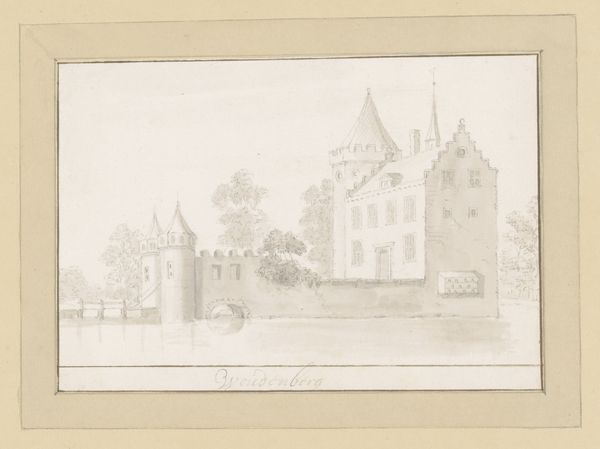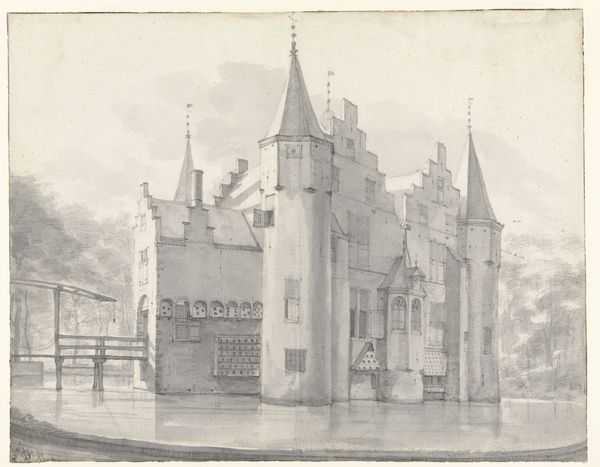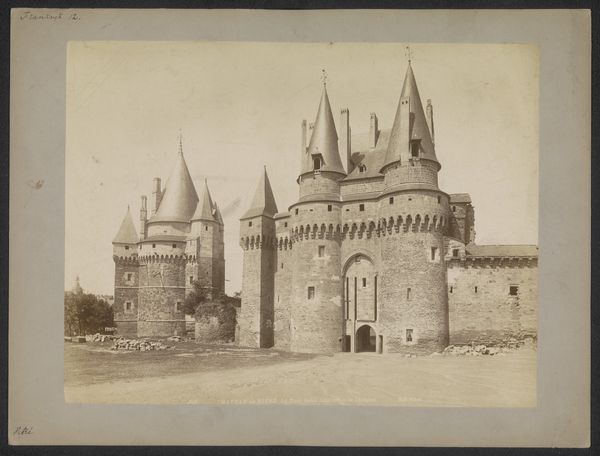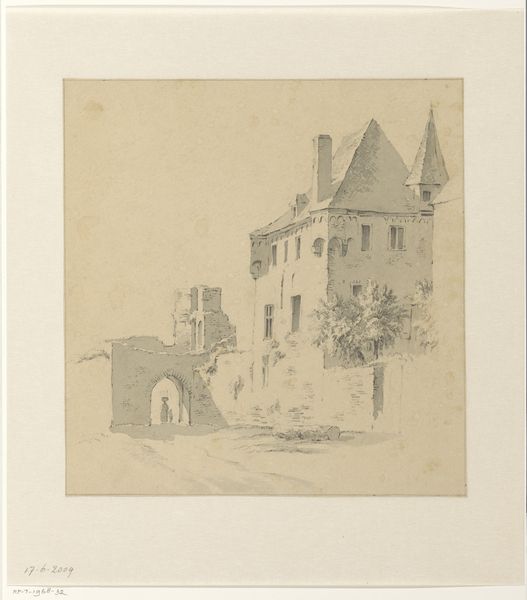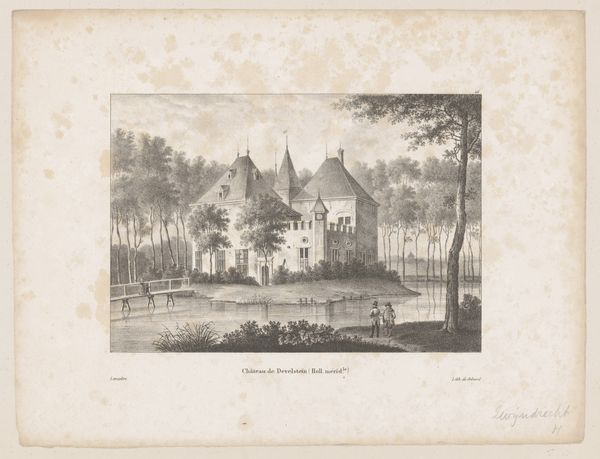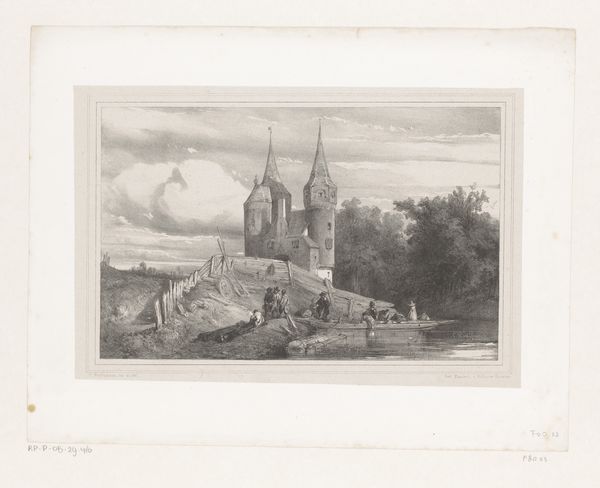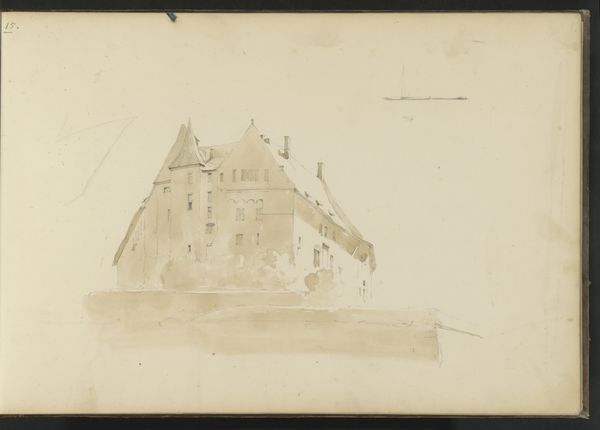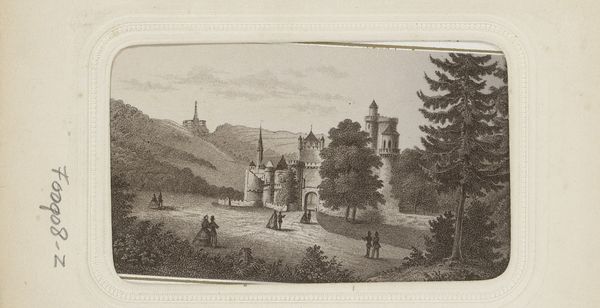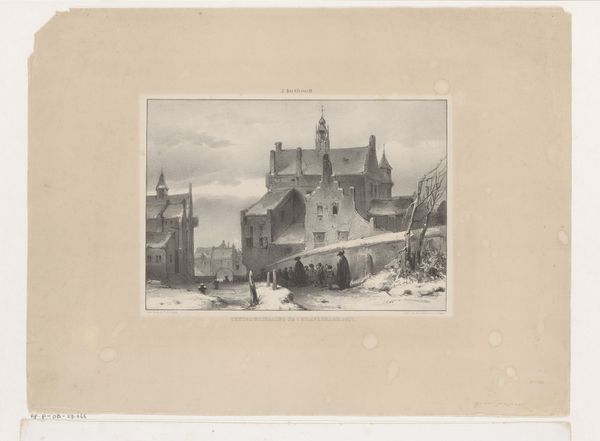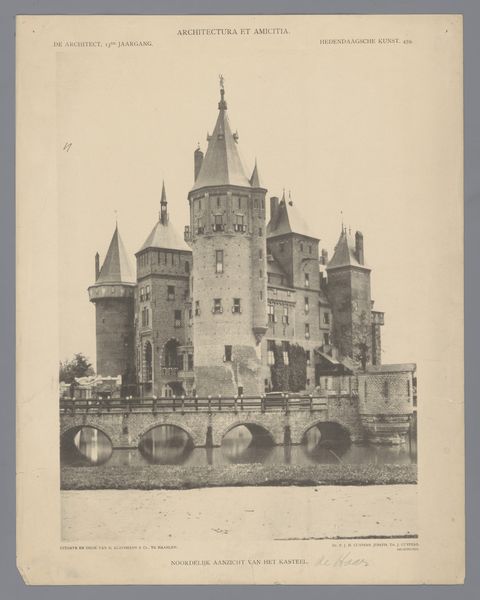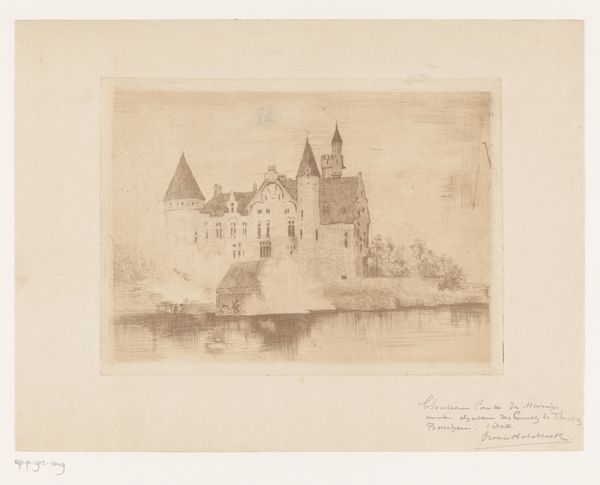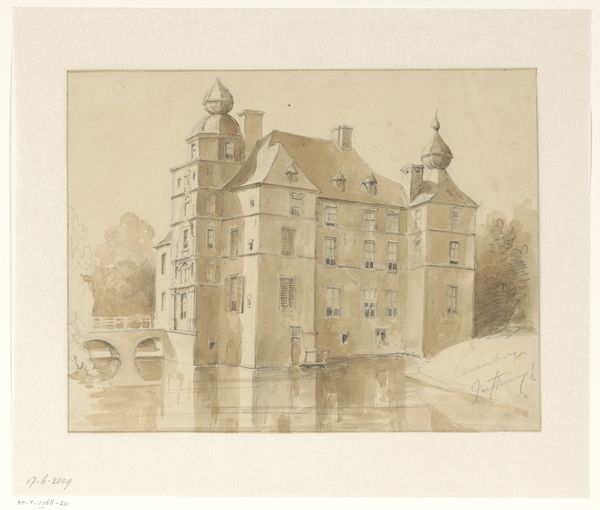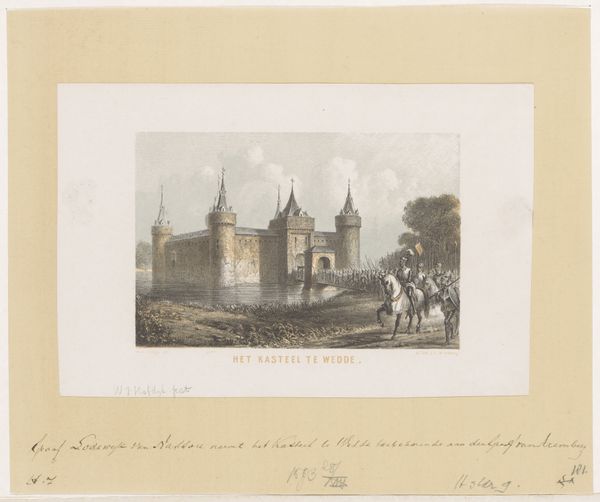
The Oude Waag in Amsterdam Seen from the North-East 1834
0:00
0:00
drawing, plein-air, watercolor
#
drawing
#
plein-air
#
landscape
#
watercolor
#
coloured pencil
#
romanticism
#
cityscape
Dimensions: Sheet: 4 1/2 × 7 3/16 in. (11.4 × 18.2 cm)
Copyright: Public Domain
Curator: At first glance, there’s almost something fairytale-like in the Oude Waag as captured in this work! It’s got that romantic haze around it... something dreamlike even though the scene feels so everyday, so peopled. What do you think? Editor: This city scene by Martinus Rørbye, completed en plein-air in 1834, positions us within the history and commerce of Amsterdam. We’re invited to consider how this weigh house, the Oude Waag, once central to the city's trade and regulation, stands amidst a bustling public sphere, a testament to both power and daily life. Curator: Power through daily life! I love that tension. The way the masts of ships rise just behind the Oude Waag in this watercolor drawing, really gives me a feeling of life and energy. Almost as if I’m actually standing here with a sketchbook… I can smell the harbor and feel the slight wind in my face. Can’t you? Editor: It evokes a sense of the city's economic networks, doesn't it? Weigh houses were not simply about weighing goods; they were spaces that negotiated fairness—or its illusion—within trade. And let's remember whose labor and bodies moved those goods. How were marginalized communities impacted by these systems? Curator: That really makes me think of all the individual stories the stones of that building could tell, layer upon layer of encounters. The figures along the bridge remind me how one is often just passing through, a transient moment…gone with the turning of the day, don't you think? I imagine Rørbye set up his easel with just the same transience in mind… Editor: Precisely. By depicting the Oude Waag in this way, Rørbye not only offers a snapshot of Amsterdam's physical landscape but prompts us to consider the historical weight embedded within seemingly ordinary settings, doesn't it? These romantic landscapes frequently leave unsaid much about labor conditions of this time, which can't be glossed over. Curator: Absolutely. It makes you wonder, doesn’t it? Now I feel like it is important to research all the other layers behind Rørbye’s moment of inspired capture. I think I’m hooked, how about you? Editor: The invitation to contextualize is always enticing and relevant, it seems.
Comments
No comments
Be the first to comment and join the conversation on the ultimate creative platform.
